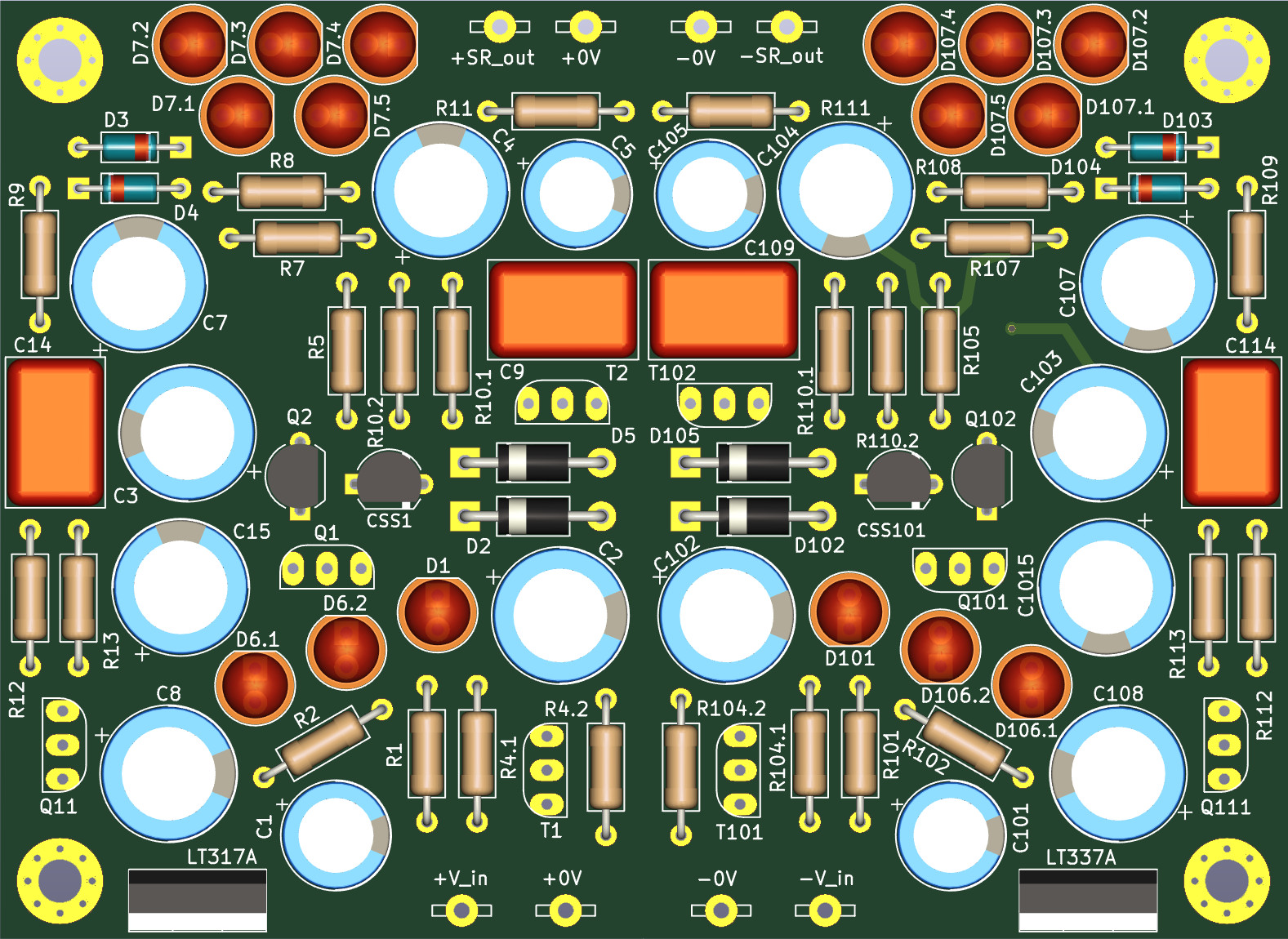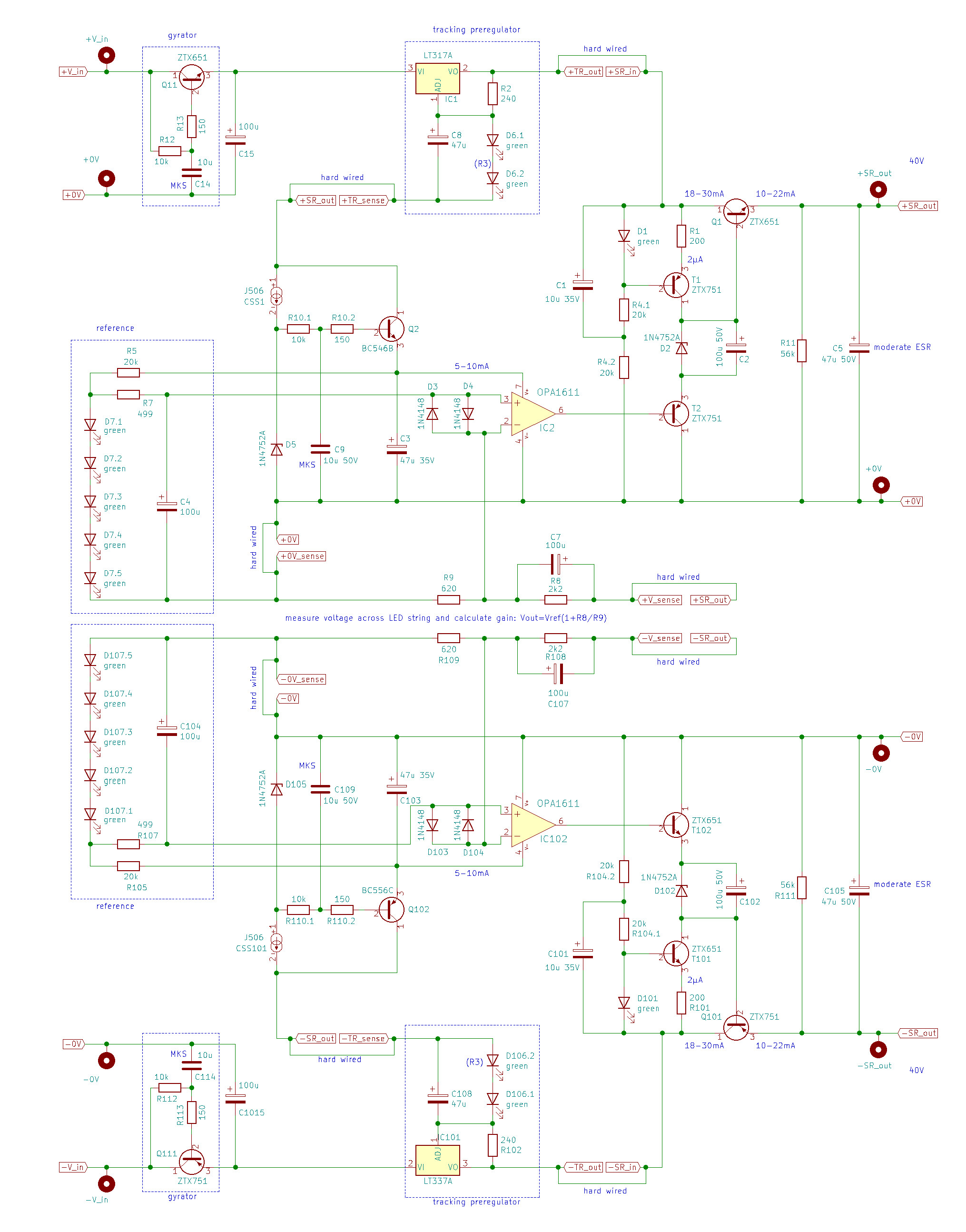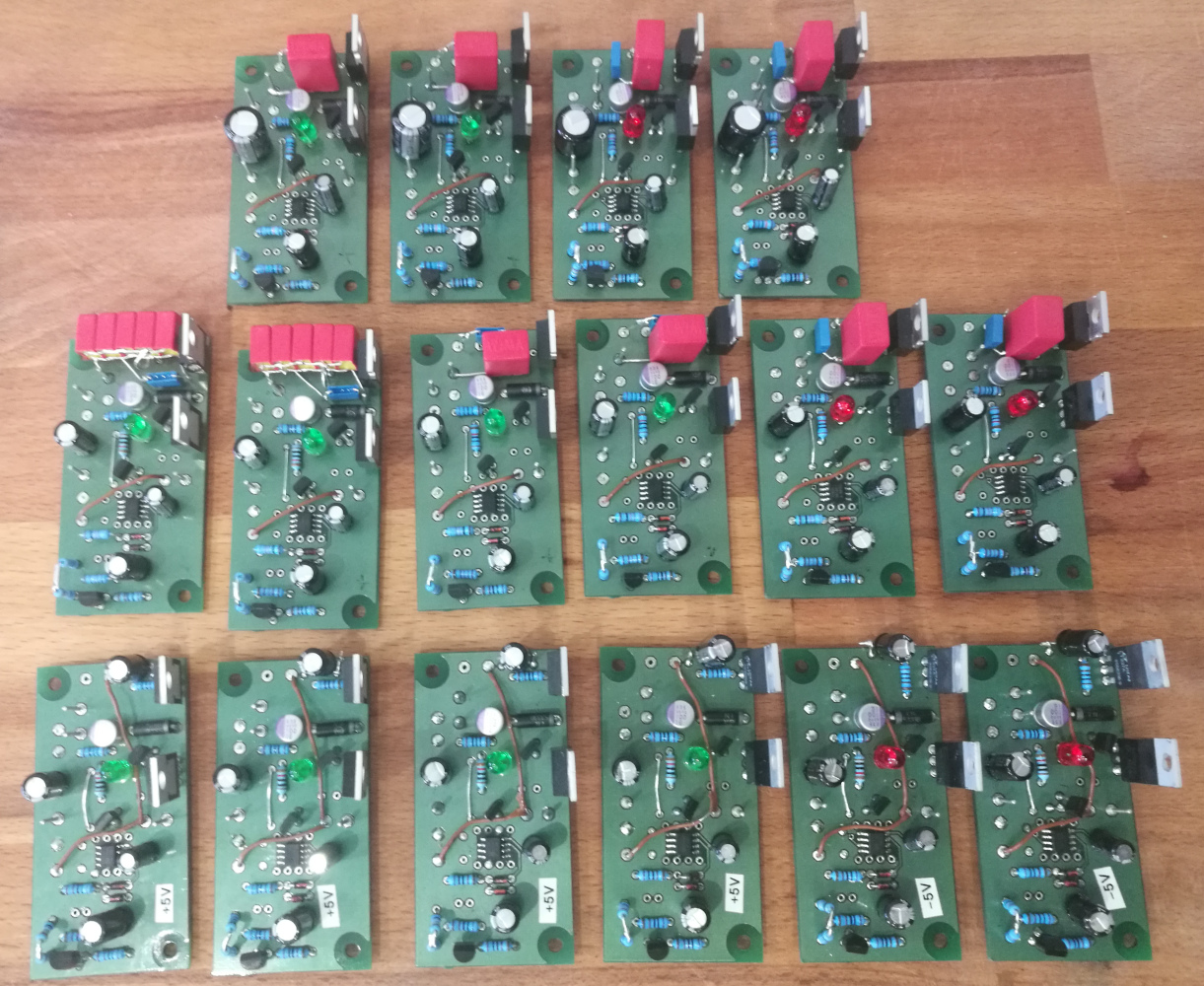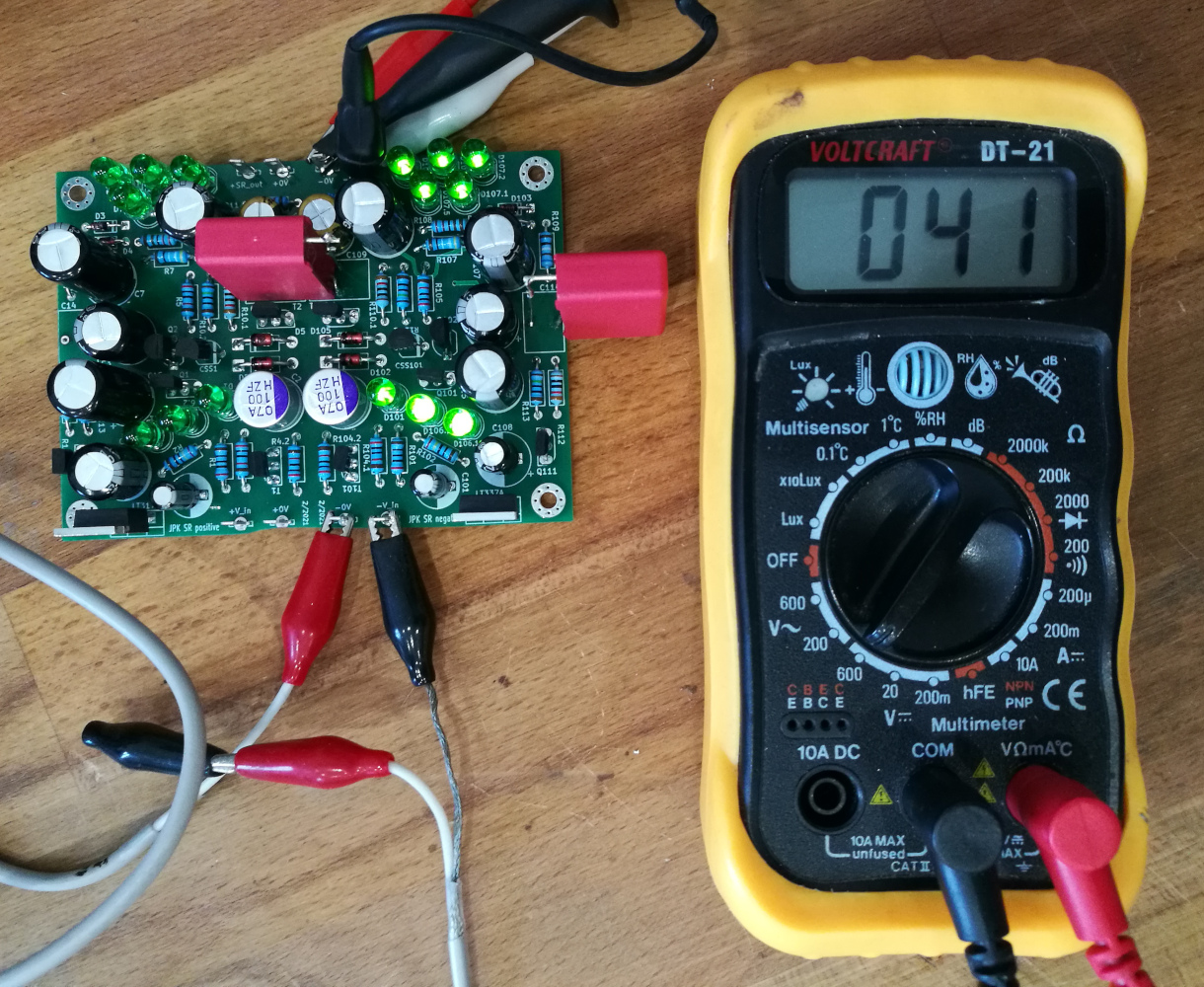In the meantime I would STRONGLY recommend parallel output devices as here https://pinkfishmedia.net/forum/threads/hackernap-parallel-output-transistors.216188/
I designed a PCB for that based on Jeffs layout but never tried it. It can be populated with 2 or 4 output devices. I am not sure if I remember correctly that a forum member successfully used MJE243/253 to drive four MJL3281s. Note this circuit has the TR3 CCS mod included and if needed the 2 small jumpers in the LTP can be cut to fit emitter degeneration resistors into the empty footprints:
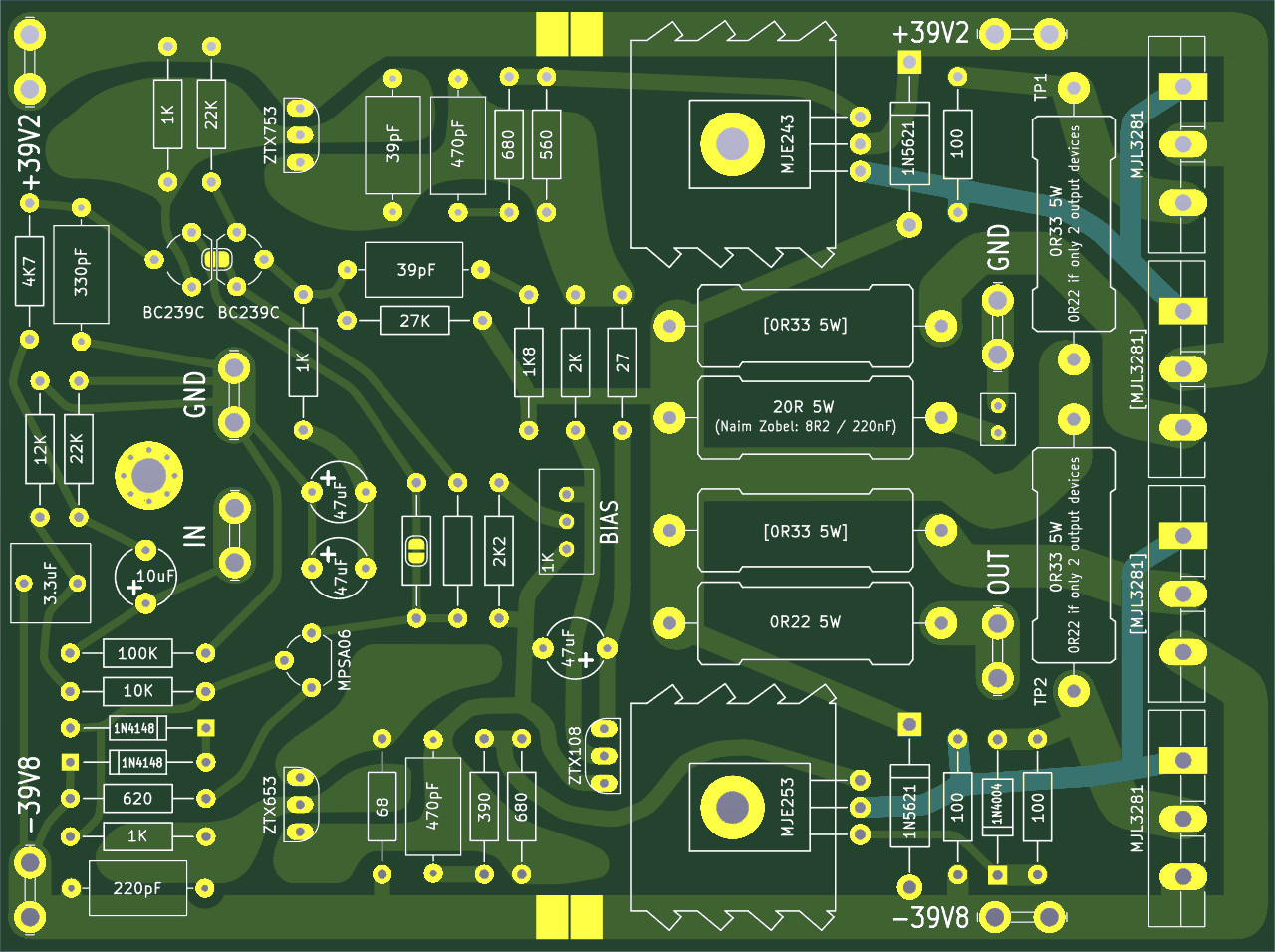
Just a comment - I think it's always better to get the rectifiers as close as possible to the transformer
I tried to move them around already - good news that the diodes don't need to be heat sinked! Will work on that, thanks!
What speakers would you envisage driving with your bridged amp?
Small ones such as Harbeth 30.1s or the Ergo IXs from the group buy. At that time I also tried the NAP500 on Kans and was totally surprised how much of a difference that made to them driven by two 135s, heck I even prefered them passive with one 500 to the active NBLs driven by the six pack. So I don't need the power of bridged amps, but I want the quality of the 500.
In class AB amps these currents are very non linear but their effects can be reduced by separate and multiple output stage 0v returns as implemented in the HackerNap.
I checked the schematic and build notes of the HackerNAP and found no extra 0V returns from the power section except from the supply rail caps - do you mean these...?
Sorry to be off topic, I am working on the super regs and will post about them as soon as I have a layout ready including the negative rail.
Last edited:



